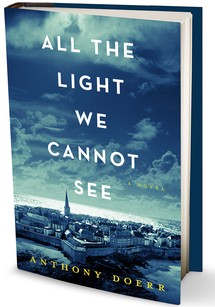The Latest Pulitzer Prize-Winning Novel
While British writers from Ian McEwan to Kate Atkinson have brilliantly mined World War II for inspiration, few of their American peers have reimagined it with the precision and narrative sweep that Anthony Doerr brings to his incandescent novel
All the Light We Cannot See. Steering clear of period clichés, the book foregrounds the parallel stories and elliptical romance of two innocents caught in the war's undertow: Marie-Laure LeBlanc, a resilient blind girl whose father is the locksmith at France's opulent Museum of Natural History, and Werner Pfennig, an orphan whose genius with radios brings him to the attention of the Third Reich. Doerr shifts back and forth in time, gingerly guiding his protagonists through critical moments in the conflagration—Marie-Laure's harrowing flight from Paris, Werner's exposure to atrocities along the Russian front—before merging their tales in the Allied bombardment of St-Malo, a picturesque walled city on the coast of Brittany.
Though Werner and Marie-Laure are steeped in loss—his friend is so severely tortured by fellow cadets in the Hitler Youth, he suffers brain damage; her father has been deported to a labor camp—the two find a courage and a beauty that anchor them: "Werner thinks of her, whether he wishes to or not. Girl with a cane, girl in a gray dress, girl made of mist. That air of otherworldliness in the snarls of her hair and the fearlessness of her step." In the end, though, only one survives. Mellifluous and unhurried,
All the Light We Cannot See surprises until the last pages with its pleasures large and small: wooden puzzle boxes shaped like houses, a Braille copy of
Twenty Thousand Leagues Under the Sea, characters as noble as they are enthralling. Doerr looms myriad strands into a luminous work of strife and transcendence.


